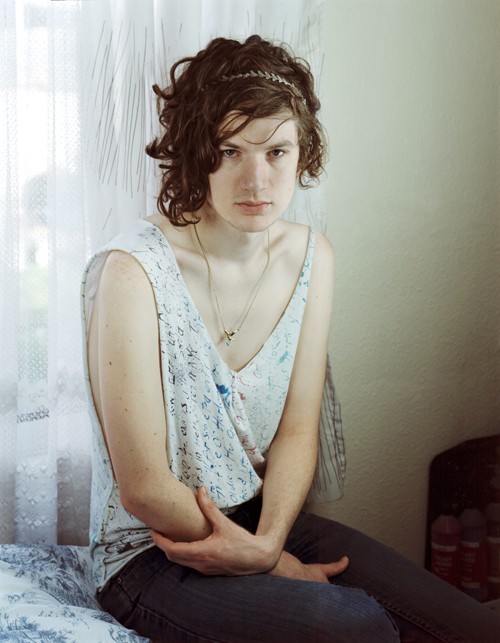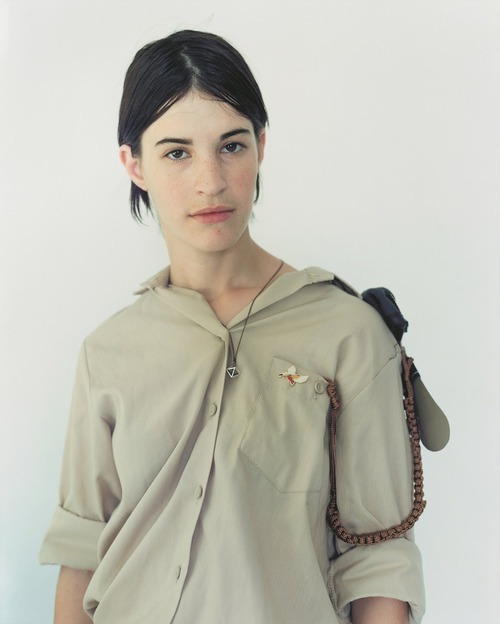Tell us about your approach to photography. How it all started? What are your memories of your first shots?
JM: Photography appeared quite late in my life. I studied Fine Arts, and I was convinced that I wanted to be a graphic designer, but gradually I moved away from design and I began to feel more interested in art, which I saw as a powerful tool of expression.
How did your research evolve with respect to those early days?
JM: As part of my trajectory as a fine artist, photography has always been my preferred medium for engagement with my narrative lines and visual language. However, at the very beginning I wasn’t interested in the process, it was the outcome, in terms of narrative success what attracted me the most. That’s why I used to work always with digital, and it was not until I had time to think about my methodology, during my MA, when I bumped into analog processes and the beauty of traditional photography rather than digital imagery. Leaving the excesses of the digital explostion, I encountered in the very early stages, the very demanding methodology of analog. I was learning how to educate my creative process in order to ‘achieve a photograph’, rather than bump into it among a thousand JPEGs. I understood this process as a journey towards my maturity as an image-maker, some kind of ‘intensive training’ of my methodology and aesthetics.

© Jesús Madriñán from the series ‘Boa Noites’
Tell us about your educational path. You have studied at Bellas Artes Universidad de Barcelona and later Central Saint Martins in London. How has your interest in photography evolved in relation to these experiences?
JM: Studying Fine Arts was the best decision I could ever make, one of my best experiences, because that critical and reflective view of the world shaped the person I am now. On the other hand, studying at Central Saint Martins wasn´t so important for me, as it was a self-directed course -too much self-directed in my opinion- so for me it meant the chance to take time for myself and my projects, but with professional guidance. The facilities, the photo technicians, the classmates, the research… all these together provided a good environment in which to learn and to carry out a personal project. For me that course was like discovering the best recipe for achieving a good dish. That course at CSM gave me all those ingredients and the steps I had to follow in order to become a professional in my medium. What I loved about CSM was working and learning hand-in-hand with a lot of talented people, extraordinarily qualified, from all around the world with similar interests, ages and experiences.

© Jesús Madriñán from the series ‘Boa Noites’
What are the courses that you are passionate about and which are meaningful for you? Any professor or teacher that has allowed you to better understand your work?
JM: I did not have a good relationship with my tutor at CSM, he was a very narrow-minded person -which is something unusual in a photographer- and he wasn’t developing his tasks properly as a teacher, so me and all my classmates were quite frustrated. Curiously, I found an important support in the photo technicians, that were amazing, and were always happy to help. You could book the photo studio with them and they were 100% available for you and your questions. They guided you with anything you needed for your shooting or project. Also you had the option of just trying things out in order to learn; lighting, cameras, video, etc. So it was like a personalised private lesson. The facilities had all the materials and equipment you needed. I can say that the photo technicians, Jet and James, taught me everything I know about photography technique, and for me that was fundamental in my development as a photographer. 
© Jesús Madriñán from the series ‘Looking for something’
About your work now. How would you describe your personal research in general?
JM: I draw inspiration from my own experience and from the context that surrounds me to create my works. I enjoy exploring documentary photography by subverting the principles of the genre itself. The paradox of capturing life’s spontaneity by techniques taken from the studio’s predictability constitutes the realm where I locate my reflections about the limits between reality and fiction. I love photography because it gives me the immediacy, the ability to narrow a reality and, somehow, the ability to capture that which depends solely on chance. This is something that interests me a lot, because photography allows me, in many cases, to be the first one surprised when I see the outcome. This is wonderful. I use a large format film camera, which is quite cumbersome and requires a lot of concentration because of its complexity, so, my work thrives on the contradiction of using meticulous techniques in inevitably spontaneous and chaotic situations. 
© Jesús Madriñán from the series ‘Looking for something’
Taking portraits it’s quite central theme of your works. From where did this come? And how is this attitude evolving through your works?
JM: I have always been interested in portraiture, not only as a document, but also as a tool for capturing the identity of the portrayed, hidden under several layers of representation and trapped in the form of a picture forever . If I focus on young people is because, in my projects, I tend to be inspired by my own experiences. I belong to those environments where I work. You could say that I interrogate myself by taking those pictures, because, somehow, they are a projection of myself, since we belong to the same generation, and we live in the same time.

© Jesús Madriñán from the series ‘Portraits’
Tell us about ‘Good Night London’ series?
JM: “Good Night London” is a series of documentary portraits taken in several London night clubs. Shot in such a hostile scenario, this series explores how artificial environments work as a key element in teenagers’ identity construction. Studio conventional photography is then taken out of context, invading this complex scenario. The calm and inspiration of a studio is here substituted for the hostile and noisy nightclub as a background in which the characters are cast.

© Jesús Madriñán from the series ‘Good Night London’
Just like the many other elements of their night, being exposed to the camera offers portraiture and the portrayed another twist of the game in which to invent a way to project themselves according to whatever narrative they may want to construct. “Good Night London” freezes real scenes, turning the noisy and the wild into an atmosphere of calm and serenity.
Do you have any preferences in terms of cameras and format?
JM: I tend to work with large format, 4x5 or 8x10.
Is there any contemporary artist or photographer, even if young and emerging, that influenced you in some way?
JM: Of course, I can say names like Gareth McConnel, Nikolay Bakharev, Richard Learoyd, Marguerite Kelsey, Emile Friant, Rineke Dijkstra, Marlene Dumas…

© Rineke Dijkstra, Shany, Palmachim Israeli Air Force Base, Palmachim, Israel
Three books of photography that you recommend?
JM: I´m gonna say the ones that I am reading right now, “Wolfgang Tillmans. Lighter”, “Contexto Crítico. Fotografía Española del Siglo XXI”, and “El Bodegón Español en el Museo del Prado”.
Is there any show you’ve seen recently that you find inspiring?
JM: Biographical Forms. Construction and Individual Mythology, at Museo Reina Sofía, Madrid.
Projects that you are working on now and plans for the future?
JM: I am moving to Colombia, where I´ll be living for the next months, as I´ll be teaching in the University. Also I am working in three new projects, and at the end of the year the publishing house Fabulatorio will be publishing a book about the ‘Boas Noites’ series, which is very exciting. In the meantime I´ll be opening solo exhibitions in Mexico, Uruguay, Argentina, and Spain, and several group exhibitions in Spain.
---
LINKS
Jesús Madriñán
Urbanautica Spain
share this page